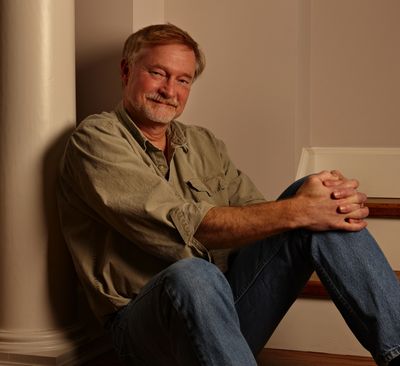For Larson, Lusitania’s passengers as alive as ever

“Unmistakable and invulnerable, a floating village in steel, the Lusitania glided by in the night as a giant black shadow cast upon the sea …”
“When you think about the Lusitania, it’s really been tucked away in high-school timelines as this geopolitical artifact leading up to World War I,” said author Erik Larson, on the phone from his New York home. (A former full-time Seattleite, he now divides time between NYC and his Capitol Hill house.) “But what came home to me when I started to do my initial vague reading was that the actual drama of the sinking itself was so powerful. When I realize that a couple of lifeboats had fallen on top of each other, that the ship had taken such a dramatic list that half the lifeboats were untouchable – that made me think, maybe there’s a lot more to it.”
Larson’s well known for his nonfiction best-sellers – “In the Garden of Beasts,” “Thunderstruck,” “The Devil in the White City,” “Isaac’s Storm” – that transform history into thrillers. His newest book, “Dead Wake: The Last Crossing of the Lusitania,” puts us on the deck of the famous “transatlantic greyhound” (so named for the impressive speed it could muster), on a fateful day in May 1915, off the southern Irish coast. Unbeknown to the ship’s nearly 2,000 passengers and crew, the Lusitania was in the crosshairs of a German U-boat, whose deadly torpedoes broke the smoothness of the water that afternoon.
Intrigued by writing a book to commemorate the tragedy’s 100th anniversary, Larson began preliminary research several years ago, visiting the Lusitania archive at Stanford University. There, something uncanny happened. “When I’m doing historical research, I need to have some kind of physical contact with the past,” he said. “Some kind of physical reassurance – hey, this really did happen.” Sitting in the library of Stanford’s Hoover Institution, “minding my own business,” an archivist plopped something down on his desk.
“It was a plank of wood from a Lusitania lifeboat,” Larson said, “found next to a body on the beach. It had the ‘L’ brand on it.” Larson took it as a “sign that I was on the right track.”
The Stanford visit was the beginning of a long journey of research (which Larson thoroughly enjoys – “it’s one of the reasons I love doing nonfiction”) that included six months spent in the UK, visiting such treasure troves as the Imperial War Museum, the archives for the Cunard line, and Churchill College at Cambridge, where Winston Churchill’s papers reside. (Churchill, presiding over a top-secret British spy group, makes appearances in the book’s pages.) Larson also visited a small town in Denmark, where the U-boat’s conning tower and other artifacts are in a museum.
And he pored over handwritten papers – letters from a century ago, written by survivors and by those who perished in the sea (correspondence written before the ship sailed was delivered at about the time of the disaster). “The thing that governed my choice of characters was the amount of material that they left behind, in the wake of the disaster,” Larson said.
In the book, we meet many of the ship’s vast population: Theodate Pope, one of the country’s early female architects; Dwight Harris, sailing to England to propose to his girlfriend and busily sending cheerfully exclamation-point filled letters home; Capt. William Turner, a self-described “old-fashioned sailorman” who would “sooner bathe in bilge” than make small talk with wealthy passengers.
In re-creating history, Larson said his goal is to have readers experience the story anew, as if it’s happening for the first time. “My big hope is that when people read the book, they will find themselves hoping against hope that Lusitania won’t sink this time. I’m a big fan of Walter Lord’s ‘A Night to Remember’ (about the sinking of the Titanic), and whenever I have read that book, I have had that feeling – ‘God, don’t let this sink.’ That’s the beautiful paradox of reading, you know, that we so suspend our knowledge and our todayness and we fall into, ideally, the narrative, if it’s done well, and we put aside everything that we know. And that’s my hope.”